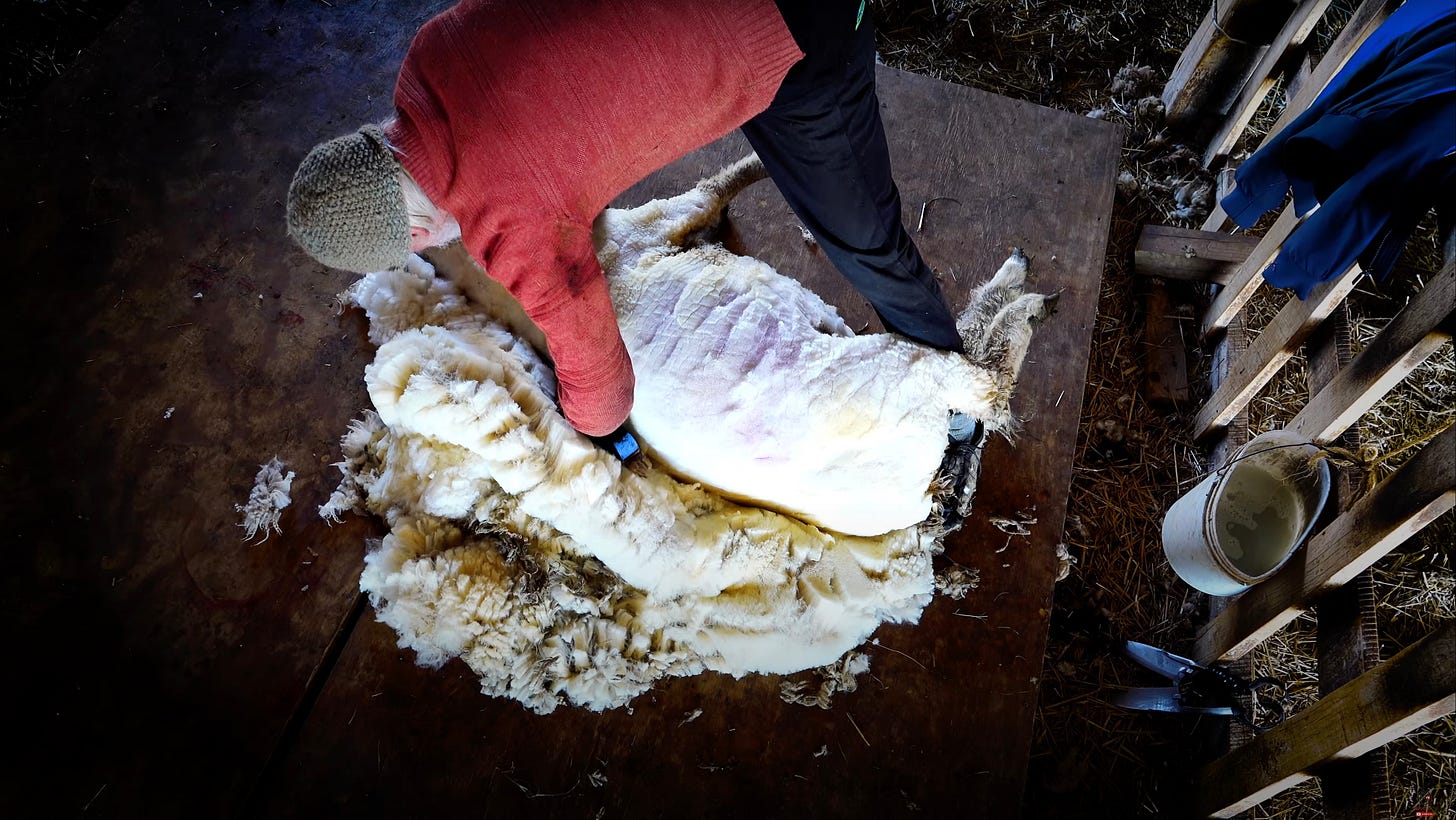Shearing Day with Kevin Ford: A Gentle Tradition Honoring Sheep and Stewardship
At a North Carolina farm, master shearer Kevin Ford keeps the ancient craft of hand shearing alive—proving that tradition, care, and craftsmanship still matter in today’s fast-paced agricultural indus
Nestled in the gentle hills of Liberty, North Carolina, where sheep graze peacefully and barns echo with the rhythm of daily life, something remarkable takes place once a year at Rising Meadow Farm. It’s more than just an agricultural chore. It’s a celebration — of wool, of tradition, of stewardship, and of a man named Kevin Ford.
Kevin isn’t just any shearer. He’s considered America’s foremost blade shearer — a title earned not just through decades of dedication, but through artistry and soul. In a world dominated by mechanization and speed, Ford keeps alive an ancient craft: blade shearing, the hand-powered, quiet, and respectful way of harvesting wool.
The Lost Art of Blade Shearing
Blade shearing is almost extinct in modern American agriculture. It’s slow. It’s quiet. It’s deeply personal. It requires skill, patience, and intuition — all things Ford brings in spades. He has sheared sheep at Rising Meadow Farm for nearly three decades, arriving each season with his handmade blades, a few whetstones, and a heart full of humility.
“I just have one pair of blades,” he says plainly. No motors. No overhead shafts. Just muscle memory and care. It’s how farmers in Ireland once sheared, and how Ford learned as a young man, seeking connection with traditional farming practices. Since then, he’s trained under New Zealand masters and even authored Shearing Day, a book on the subject.
A Life in Wool
Kevin’s journey is woven with curiosity, commitment, and reverence. From a sprained thumb that forced him to shear left-handed for two years, to teaching apprentices the delicate dance of the blade, he embodies what it means to be a master of a vanishing craft. His tools are few, his technique precise, and his mind always alert. “It’s a mental game,” he admits. “Like a pitcher in baseball — it’s all in the mind.”
The shearing process itself is hypnotic. There’s a rhythm, a pattern. Bellies first. Shoulders next. Every movement has purpose. Every cut is thoughtful. “The blades find their level,” Kevin explains. “It’s about learning where the wool wants to release.”
A Partnership with the Animal
There’s a myth — a harmful one — that shearing is cruel. Kevin and the farmers at Rising Meadow are here to show otherwise. These sheep, lovingly raised and gently handled, require shearing. Over generations, humans have bred them to grow continuous wool. Without shearing, they’d suffer from overheating, matting, and disease. Shearing isn’t just for us — it’s for them.
“We’ve developed them this way,” Kevin says with quiet conviction. “Now, it’s our responsibility to care for them. It’s good husbandry. It’s respect.”
Indeed, the relationship between human and sheep is ancient. From wool to meat to dairy and leather, these animals have provided for us in ways most people rarely contemplate. “We should respect the animal for all the gifts it gives us,” Kevin says.
Beyond the Barn
What unfolds at Rising Meadow isn’t just shearing — it’s preservation. It’s cultural memory kept alive through hand, heart, and steel. Kevin speaks of international competitions, like Golden Shears, where blade shearers gather to test their skill and learn from one another. He mentions how traditional patterns evolve, how old methods give way to better ones, yet still rooted in care.
The camaraderie among shearers is as much a part of the tradition as the shears themselves. Kevin trains apprentices, travels from farm to farm, and reminds us that craftsmanship has a place in modern agriculture — if we’re willing to honor it.
The Wool Comes Full Circle
In the end, it’s not just about wool. It’s about legacy. Connection. Gratitude. As Kevin finishes his work, the sheep trot away lighter and more comfortable. Their coats — soon to become sweaters, scarves, or yarn — carry with them a story of touch and trust.
Too often, consumers are disconnected from the origins of their clothing. Watching Kevin Ford work, one is reminded that behind every fiber lies a life — and behind every life, someone like Kevin, tending it with care.
On this shearing day, at a quiet farm in North Carolina, ancient hands meet living wool — and the cycle of stewardship continues.




